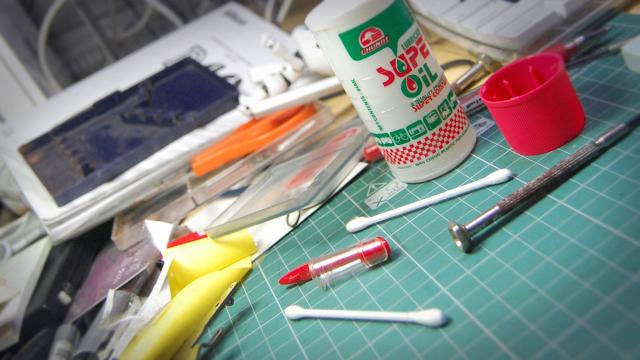When I was 14, my stereo broke. Opening it up, I found a small piece of metal had been disconnected from the circuit board at the base. I grabbed a lighter and melted the piece back in place. I plugged the stereo back in and turned it on. It worked. It was the first time I actually got something I tried to fix working.
Picture: odomut/Flickr
It’s a story most of us probably share one way or another. The pure joy that follows when you fix a gadget that was once broken is hard to match, and it can become an addiction. However, as time goes on, gadgets have gotten smaller and harder to work on. They’re harder to fix, and most of us decide it’s easier to just buy a new one than to repair an old one.
But just because it’s easier to move on to a new gadget doesn’t mean we should. Last month, I had the misfortune of losing both a hard drive and a graphics card on a notoriously impossible to work on iMac. My first reaction was to just abandon it and move on, but my research showed that both of those parts were replaceable. The final cost of repair? About $400 and a lot of time. The cost of a new 27-inch iMac? At least $1999.
It’s not just the fact I saved a lot of money; it’s that I didn’t have to buy something new. I fixed the computer I already paid (too much) money for and breathed life back into it. When that startup chime rang again, it made my heart skip a beat.
The point is that a quick repair like this can get you something that more than meets your needs. When you’re done, you realise that the newest thing isn’t necessary. For me, that new iMac was shiny but totally unneeded. Once I was up and running again, I was happy with the old one. It’s not just about repairing, it’s about making what you already have work, even when you think it shouldn’t.
We talk a lot about the value of making things here and doing everything yourself. But as Wired pointed out recently, the maker movement is just half of the equation. We need a “fixer movement” too:
We need, in short, a fixer movement. This would be a huge cultural shift. In the 20th century, U.S. firms aggressively promoted planned obsolescence, designing things to break…
Today e-waste has become one of the fastest-growing categories of refuse. We chucked out 2.4 million tons of it in 2010 and recycled just 27 per cent. And “recycling” often means shipping electronics overseas, where the toxic parts pollute developing countries. It’s a mess. A fixer movement could break this century-old system.
One superb place to start is fixing computers — because these days old models perform nearly as well as new ones. As hardware hacker Andrew Huang has noted, cloud computing has artificially slowed Moore’s law: An older laptop runs a browser just fine. Plus, computers are often surprisingly fixable. Vincent Lai, a Fixer Collective volunteer, gets handed “dead” laptops — “and for $US20 I can fix it. It’s a user-replaceable part! For $US20 the user could have fixed it.”
And Wired’s totally right. Computers and laptops are deceptively easy to fix, and their lives are a heck of a lot longer than most of us give them credit for. I fixed and cleaned up my seven-year-old laptop to pass on to my dad a few months ago, and it’s still kicking just as strongly as it did the day I bought it. All it took was a few hours of work.
Of course, it’s not just about computers. It’s about every product we buy. From toasters to speakers, having the skill set (or the willingness to look online for repair guides), patience and ability to fix the stuff we pay for really matters. Unfortunately, it’s not always as easy as it should be.
In some cases, companies are just making their products smaller and less user-serviceable. But the other problem is that if you try to fix something yourself, you’re going to void the warranty. All of these issues have prompted sites like iFixit and Sugru to post their own “fixer manifestos”. Both boil down to a pretty simple set of ideas and rights, including:
- The right to open and repair our things without voiding a warranty.
- The right to choose your own repair technician.
- The right to troubleshooting instructions and documentation.
- The right to hardware that doesn’t require proprietary tools to repair.
While it would certainly be nice for companies to make repairs easier for us, it boils down to making the effort to fix and preserve things ourselves. The maker movement, and the idea of creating something from nothing, is a lot easier to sell than just fixing up that 30-year-old blender.
Seriously, from bikes, cars and chairs, to computers, repairs are surprisingly easy to do yourself. After all, when a broken gadget is brought back to life, you feel the same elation as powering something on for the first time.
Republished from Lifehacker.
